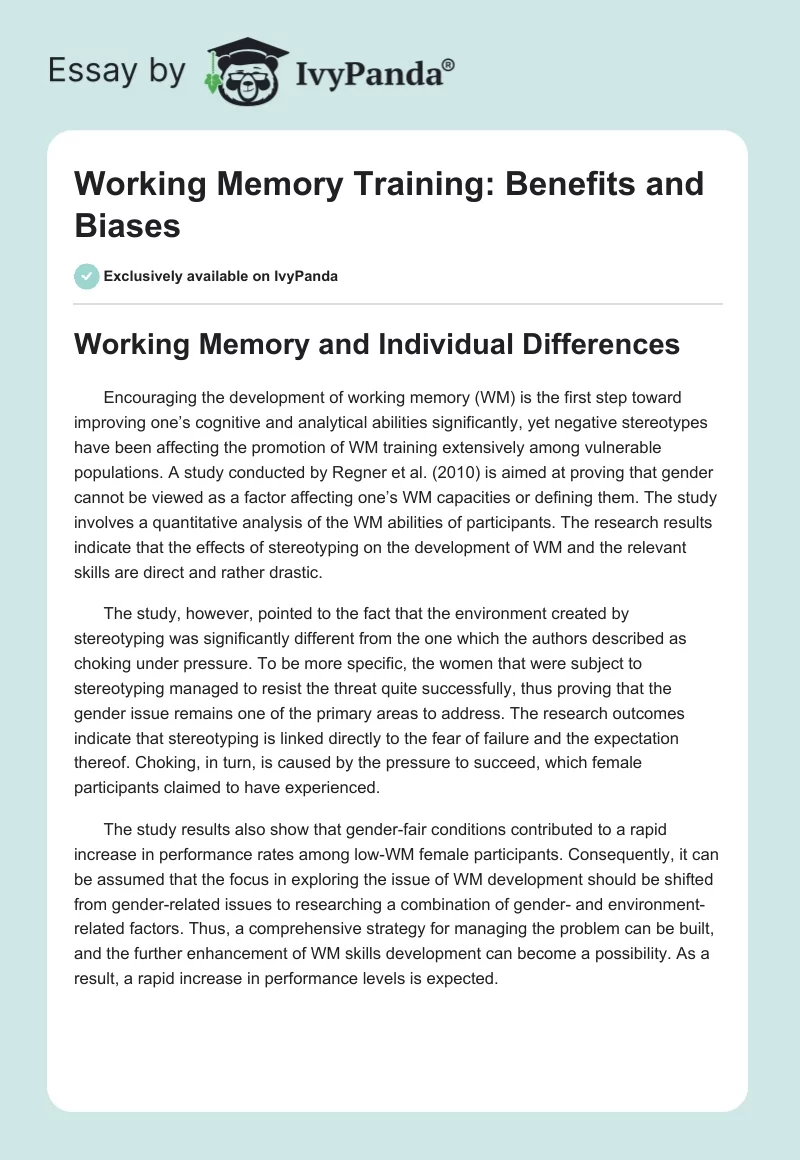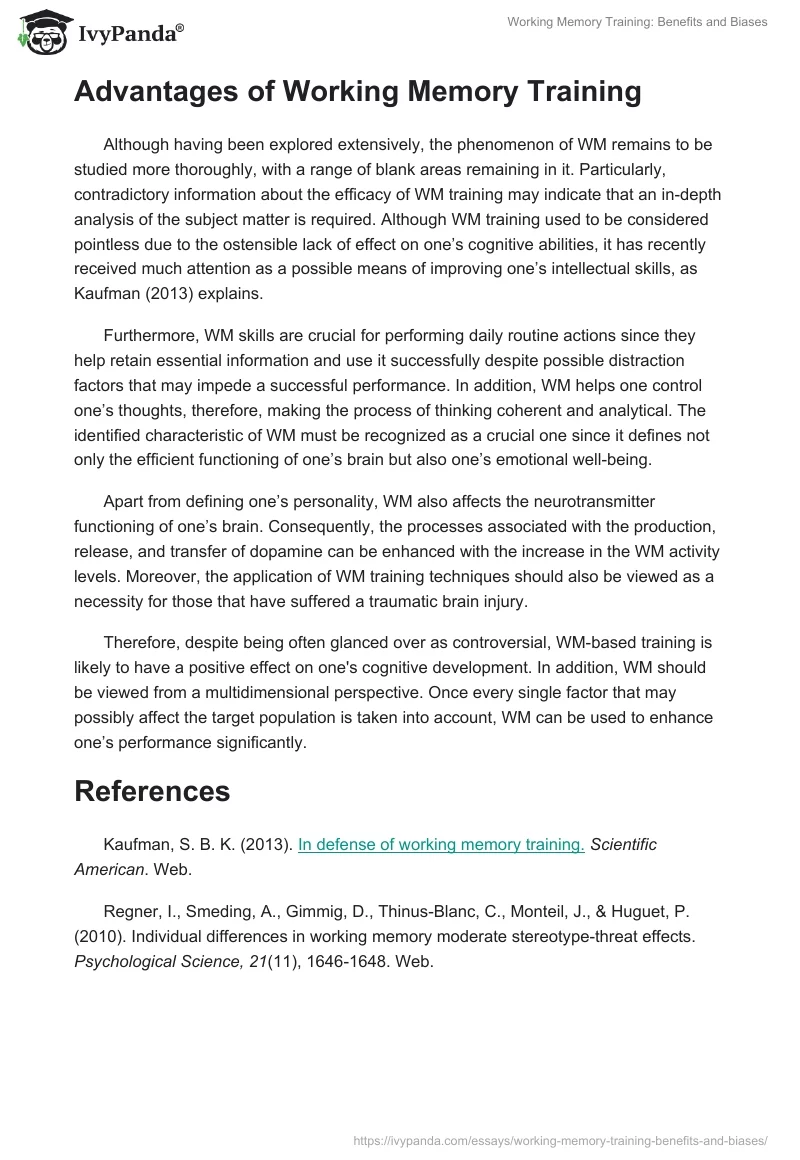Working Memory and Individual Differences
Encouraging the development of working memory (WM) is the first step toward improving one’s cognitive and analytical abilities significantly, yet negative stereotypes have been affecting the promotion of WM training extensively among vulnerable populations. A study conducted by Regner et al. (2010) is aimed at proving that gender cannot be viewed as a factor affecting one’s WM capacities or defining them. The study involves a quantitative analysis of the WM abilities of participants. The research results indicate that the effects of stereotyping on the development of WM and the relevant skills are direct and rather drastic.
The study, however, pointed to the fact that the environment created by stereotyping was significantly different from the one which the authors described as choking under pressure. To be more specific, the women that were subject to stereotyping managed to resist the threat quite successfully, thus proving that the gender issue remains one of the primary areas to address. The research outcomes indicate that stereotyping is linked directly to the fear of failure and the expectation thereof. Choking, in turn, is caused by the pressure to succeed, which female participants claimed to have experienced.
The study results also show that gender-fair conditions contributed to a rapid increase in performance rates among low-WM female participants. Consequently, it can be assumed that the focus in exploring the issue of WM development should be shifted from gender-related issues to researching a combination of gender- and environment-related factors. Thus, a comprehensive strategy for managing the problem can be built, and the further enhancement of WM skills development can become a possibility. As a result, a rapid increase in performance levels is expected.
Advantages of Working Memory Training
Although having been explored extensively, the phenomenon of WM remains to be studied more thoroughly, with a range of blank areas remaining in it. Particularly, contradictory information about the efficacy of WM training may indicate that an in-depth analysis of the subject matter is required. Although WM training used to be considered pointless due to the ostensible lack of effect on one’s cognitive abilities, it has recently received much attention as a possible means of improving one’s intellectual skills, as Kaufman (2013) explains.
Furthermore, WM skills are crucial for performing daily routine actions since they help retain essential information and use it successfully despite possible distraction factors that may impede a successful performance. In addition, WM helps one control one’s thoughts, therefore, making the process of thinking coherent and analytical. The identified characteristic of WM must be recognized as a crucial one since it defines not only the efficient functioning of one’s brain but also one’s emotional well-being.
Apart from defining one’s personality, WM also affects the neurotransmitter functioning of one’s brain. Consequently, the processes associated with the production, release, and transfer of dopamine can be enhanced with the increase in the WM activity levels. Moreover, the application of WM training techniques should also be viewed as a necessity for those that have suffered a traumatic brain injury.
Therefore, despite being often glanced over as controversial, WM-based training is likely to have a positive effect on one’s cognitive development. In addition, WM should be viewed from a multidimensional perspective. Once every single factor that may possibly affect the target population is taken into account, WM can be used to enhance one’s performance significantly.
References
Kaufman, S. B. K. (2013). In defense of working memory training.Scientific American. Web.
Regner, I., Smeding, A., Gimmig, D., Thinus-Blanc, C., Monteil, J., & Huguet, P. (2010). Individual differences in working memory moderate stereotype-threat effects. Psychological Science, 21(11), 1646-1648. Web.


